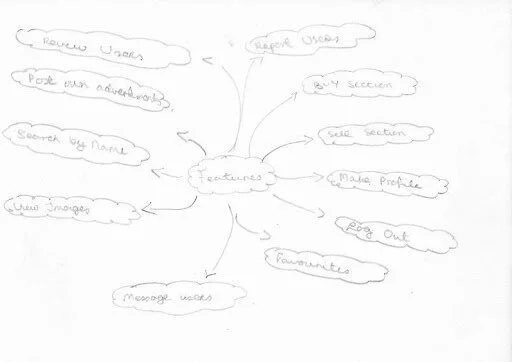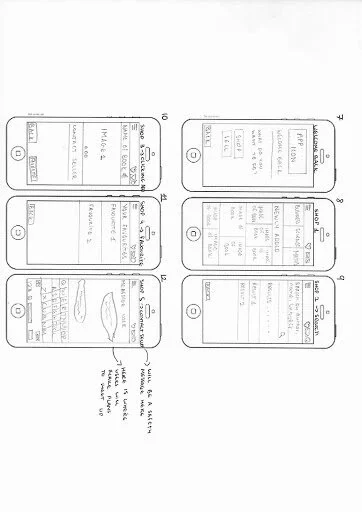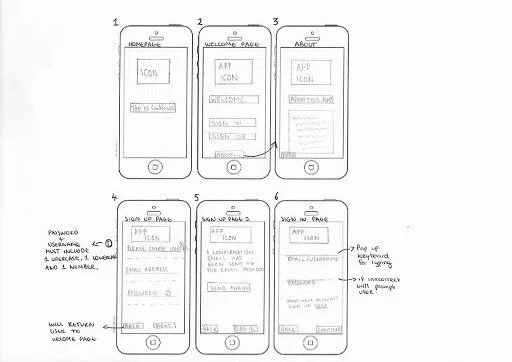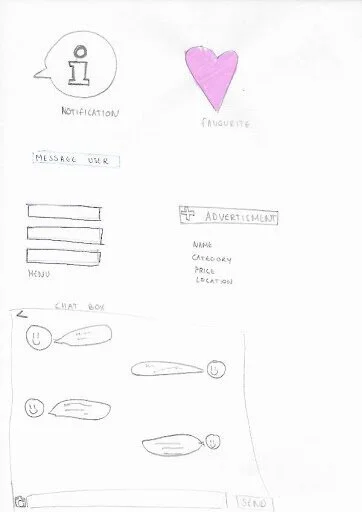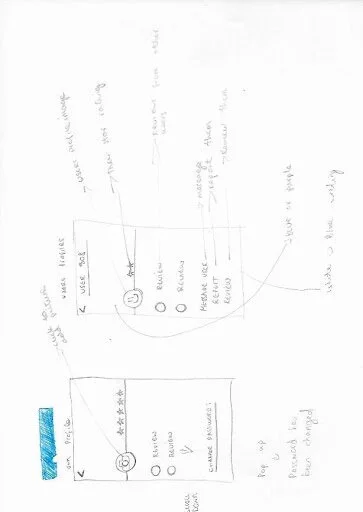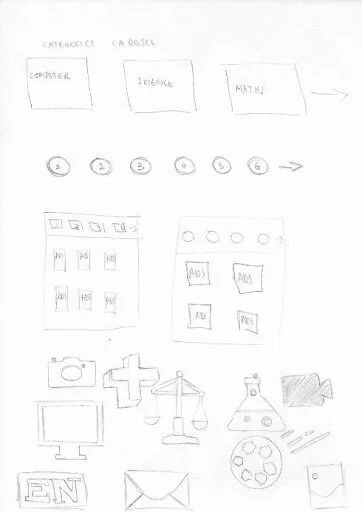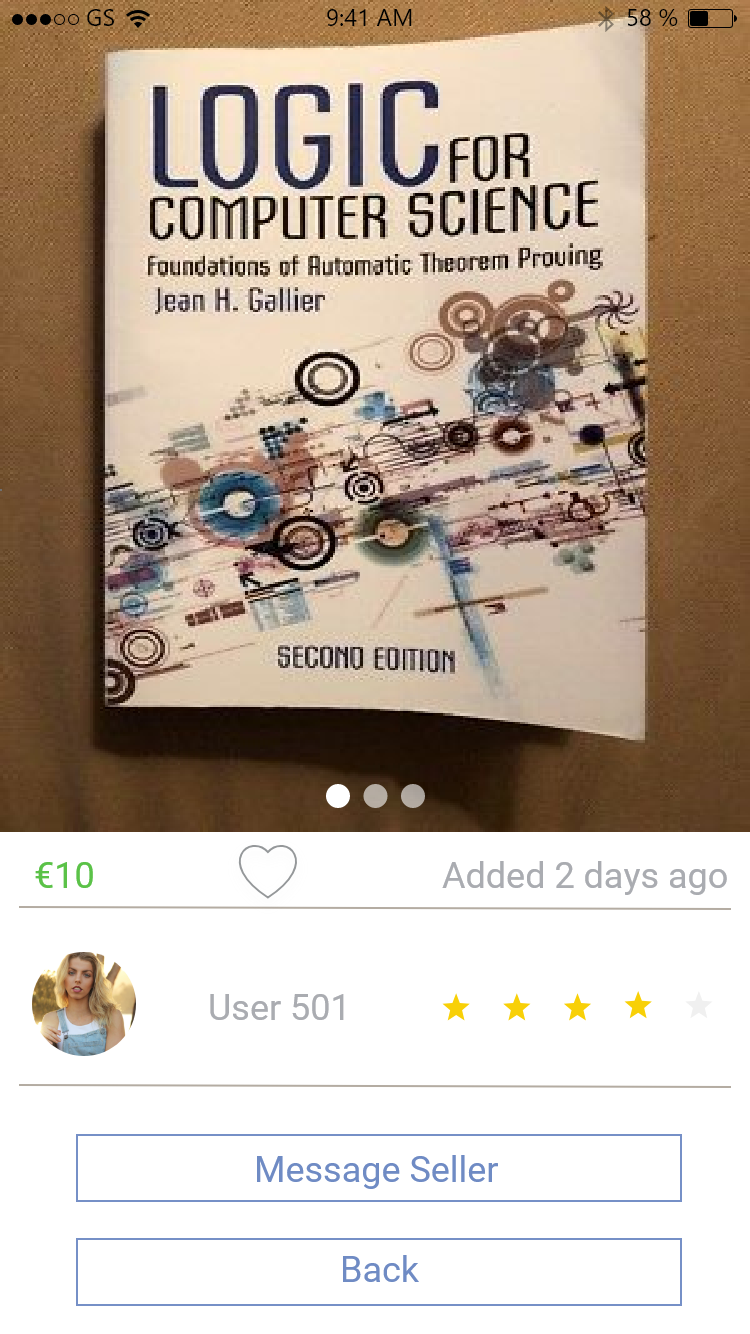Final Year Project
For my Final Year Project I designed a high fidelity mobile application called ‘Turn the Page’
The Problem
While studying at the University and talking to my own friends about our courses we all had the same conclusion. That we would rather look up information on the Internet for our assignments and projects then waiting in line hoping that the one book we want in the library is in stock or having to spend huge amounts of money on new books that we will only need for 12 weeks out of the year. In my whole 4 years in college I have never used a book for an assignment, solely because of how hard it is to acquire them. For my Final Year project my topic was on the collaborate/sharing economy and how sites like AirBnb and eBay have helped people to acquire exactly what they are looking for for a cheaper price.
I decided that I would combine these two topics and create something that would help students like myself in the University of Limerick find an easier more accessible, quick way to acquire the college books that they need.
The Process
After brainstorming and researching the current ways that books can be bought including book fairs, online shopping, libraries and borrowing books. I decided upon creating a mobile marketplace application solely for students in the University of Limerick to buy and sell their used college books to one another. This was designed to be a mutually beneficial non profit service that allowed both the buyer and the seller to gain from the process. The students who were selling the books would gain a percentage of the money back that they had originally spent on the book and the student in need of the book would get it from a source that will deliver quicker and close by.
For my qualitative research I recruited fellow students within the University from many different courses and performed quick interviews with them. These questions focused on answering one of my main questions, that being “If there were an app like this would you use it” This question came back with a high number of positive answers and from there I knew that my Idea was a good one. These questions led to a very detailed questionnaire that helped me to understand exactly what my users wanted from an app like this. I also asked these users if they would participate in my future user workshops for my prototype.
Along with user interviews, I researched the current market. This market research was to understand what features on other similar marketplace apps works, for example a favourites option. I also used this research as a basis of what I wanted my app to look like.
Finally I researched literature and academic papers. These were great at giving me statistics about shopping habits and users online habits.
Aims
• Provide a way for students within the University of Limerick to buy and sell their used college books to one another
• Reduce costs for students within the University of Limerick.
• Encourage the use of second-hand books and reduce waste.
• Allow students to see their books put to good use.
• Create and design an easy to use mobile application.
Low Fidelity Prototype
Following on from my user research I began sketching and creating a very rough idea of what I would like my app to look like. My decision to design an app rather then a website came from my user research interviews. There was an overwhelming response in favour of using a mobile app rather then a website, with the main reason for this being that students have their phones with them nearly at all times and it would allow communication between the seller and the buyer while outside of the house.
I designed every screen and interaction that I believed I would need within my app and numbered them in order. I then contacted 5 of my interviewees from my first stage to a workshop and allowed them to walk through the app as if they were using it. This provided me with the feedback I needed and any errors or missteps were corrected at this stage.
Medium Fidelity Prototype
After the testing of my low fidelity prototype I began my Medium Fidelity Prototype. Here is where I ran into the most problems in this project. For nearly a week I could not get the design to look anything like how I wanted it to. I went through many different iterations of this to nearly the point where I was going to start a completely different project.
I took a break, did some more research, tested a few different styles with some of my workshop participants and colleagues. They provided me with some feedback and design tips which helped me to decided on a better design.
High Fidelity Prototype
Upon completion of my user testing I moved onto my final stage of prototyping. I created a high fidelity wireframe using Adobe XD with interactions showcasing the final design of my app. This app had all features that my users had requested and suggested to make it the best application for them. I was very happy with how it turned out after I had spent so long trying to design them. Below is some examples of the final prototype.
Result
My application solved the problem that I had originally set out to do as well as making it as user friendly and accessible as I possibly could. My workshops users feedback as well as that of my course friends allowed me to create an application that I was extremely happy with. This Project greatly improved my UX Design skills and contributed greatly to me in achieving my degree in Digital Media Design
If you would like to view this completed prototype please click the link here!
To accompany my application I wrote a 20,000 word written document detailing all the user testing and research behind it.

